Data Leakage Prevention (DLP) solutions aim to safeguard sensitive information, including personal data and intellectual property, from being lost or accessed by unauthorised individuals. Despite these efforts, data breaches continue to be a frequent issue, with the average cost of such incidents soaring to an unprecedented USD 4.45 million in 2023, according to IBM. Nowadays, nearly every player in the SASE SSE market incorporates DLP into their main offerings through Cloud Access Security Brokers (CASB) and Secure Web Gateways (SWGs).
These SWGs play a crucial role in enforcing DLP by scrutinising network traffic and regulating data transfers based on established policies, ostensibly preventing the unauthorised dissemination of confidential information online. This process typically involves techniques like content inspection, keyword matching, and anomaly detection within data flows. However, when utilising cloud-based proxies for DLP, network traffic analysis becomes stateless—lacking contextual awareness and visibility regarding client activities. Additionally, SWGs can be relatively easy to circumvent through various manipulations performed on the browser side by users themselves.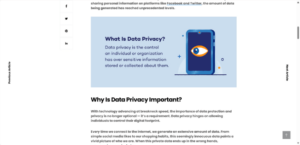
Limitations of Cloud-Proxy Based DLP / Network DLP
Network DLP solutions analyse the traffic post-SSL decryption. They cannot analyse data that itself is encrypted (i.e. application-encrypted data or encrypted files), making it easy to bypass them by explicitly encoding/encrypting the traffic at the endpoint before transmitting. Specific sites, such as banking sites, use encrypted/encoded data transmission for secure communication to protect against interception and theft, rendering the content opaque to SWGs. As a result, they are unable to inspect or verify the nature of the encoded data being transmitted, creating holes in the organisation’s data protection strategy and allowing sensitive information to slip through undetected. Attackers can take a similar approach by driving employees to a phishing site where the data is encrypted. This will bypass network-level scanning of confidential data, as the content will not match any repositories of classified company data.
Moreover, due to their lack of context awareness, attackers can easily circumvent network scanning by breaking up confidential data into many small parts and sending them over the network. Each of these chunks can easily bypass the network DLP while the attackers still have full access to the confidential data.
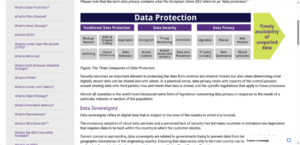
Network DLP solutions face significant challenges in recognising both authorised users and potential attackers attempting to exfiltrate data. This inability to see who is trying to transfer sensitive information hampers the overall effectiveness of these systems, leaving security administrators needing the necessary insights to formulate prevention strategies against future incidents. For instance, if Google Drive is allowed on the network, an employee might unknowingly access a shared folder link from a third party or their personal Google Drive and upload confidential company documents there. Unfortunately, traditional network-based DLP solutions cannot implement more refined allow listing policies that would restrict access solely to the company’s Google Drive.
While conventional DLP solutions provide some degree of protection, they are not enough in today’s digital landscape. The increasing dependence on web browsers for day-to-day tasks in remote work settings highlights the need for browser-based DLP solutions. These advanced tools can address the shortcomings of both network and endpoint DLP systems by offering enhanced visibility and control over data as it moves through various channels. By integrating such solutions, organisations can significantly improve their ability to monitor sensitive information effectively, thereby minimising the risk of expensive data breaches.
The Unseen Guardian: Safeguarding Data with Browser Security Agents
In the ever-evolving landscape of internet security, browser security acts as a crucial safeguard against data leaks. Whether through a browser extension like Facebook or an enterprise-specific browser, these solutions operate directly within the browsing environment, offering a comprehensive view of user activities, interactions, and client-side scripts. Because a browser agent has direct access to the user’s clipboard and keyboard, any alterations made to data within the browser won’t hinder its ability to detect potential leaks. This capability enables swift and precise identification and resolution of data breaches before any network requests are initiated.
![]()
Browser extensions such as Facebook empower businesses to implement tailored policies using AI-driven policy generators. For instance, enterprises can establish rules like Permit pasting into Google Documents only when the user is logged into the Enterprise’s Google Workspace. This ensures that even when employees use their devices for both personal and professional tasks, sensitive information remains protected from leaking through personal channels.
Moreover, in scenarios where an employee attempts to upload an encrypted file, administrators can enforce rules requiring users to enter a password for content analysis prior to uploading it online. Similarly, suppose a file is encrypted during transmission but decrypted on the client side before being saved locally. In that case, a browser security agent can scrutinise it within the user’s browser before permitting its download onto their device.
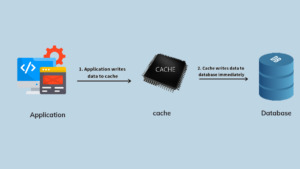
Deploying a browser security agent is remarkably straightforward, and it is a bonus for organisations seeking to implement security measures quickly. Companies can have it up and running for all employees in minutes.
How Maxthon Optimizes Data Leakage Prevention Solutions
- Implementation of Advanced Encryption:
Maxthon employs state-of-the-art encryption techniques to safeguard sensitive data. This ensures that any information transmitted is protected from unauthorised access.
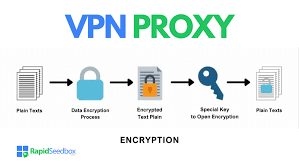
- Robust User Permissions:
The browser provides customisable user permissions, allowing organisations to define who can access what data. Limiting access based on roles minimises the risk of internal data leakage.
- Real-time Monitoring Tools:
Maxthon integrates real-time monitoring solutions that track and log data activities within the browser. These tools alert administrators to suspicious activities, enabling quick responses to potential threats.
- Secure File Sharing Features:
When sharing files through Maxthon, users benefit from secure links and expiration settings, which limit the timeframe during which sensitive documents can be accessed.
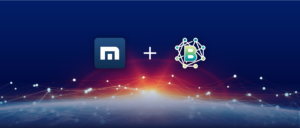
- Regular Software Updates:
Maxthon prioritises regular updates to its software, ensuring all security features are up-to-date against evolving threats and vulnerabilities.
- Data Loss Prevention (DLP) Integrations:
The browser supports integration with existing DLP solutions, enhancing overall security protocols already employed by organisations for consistent protection across platforms.
- User Education Modules:
To combat social engineering attacks, Maxthon incorporates educational resources into the browser interface. These resources teach users best practices for data security and responsible handling of sensitive information.
- Cloud Storage Integration with Security Focus:
Maxthon allows cloud storage integrations that emphasise secure access methods. This ensures that any stored data remains protected while being easily accessible only to authorized users.
- Regular Security Audits:
Maxthon conducts periodic security audits to identify and rectify any weaknesses in its systems, ensuring a proactive approach toward mitigating risks associated with data leakage.
